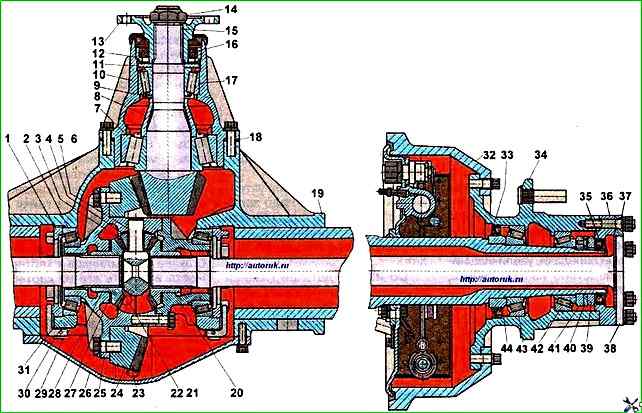The ZIL-Bychok is equipped with a leading rear axle with a single-stage hypoid final drive (Fig. 1)
The final drive ratio is 3.273 or 3.45.
The differential is a bevel gear with four satellites.
The half-shafts are fully unloaded.

The drive axle housing is prefabricated, non-separable, consists of a cast iron housing with steel casings pressed into it, to which flanges and brackets are welded.
When determining the condition of the rear axle by noise, you should make sure that the sound comes from the axle.
This is quite difficult to do due to the relatively high noise level of a diesel engine.
Usually, the test is carried out by the exclusion method:
1. When the car is accelerating, listen to the noise and note the speed at which it appears and disappears, the same is done in the engine braking mode without using the braking system.
Usually, rear axle noise during deceleration and acceleration occurs at the same speeds.
2. When coasting and the gear shift lever in neutral.
In this case, the main gear pinions are not loaded and do not make noticeable noise, therefore, if the nature of the noise coincides with the noise when accelerating the car or braking with the engine, then this means that its source is not the main gear.
If the nature of the noise changes, then it is likely that the source of the noise is the main gear pinions, or the bearings of the pinion or differential.
3. With the car stationary and braked, listen to the engine running in different modes to exclude noise caused by its operation, with the car reliably braked and the rear wheels raised, start the engine and engage fifth gear.
This will determine that the noise really comes from the main gear.





